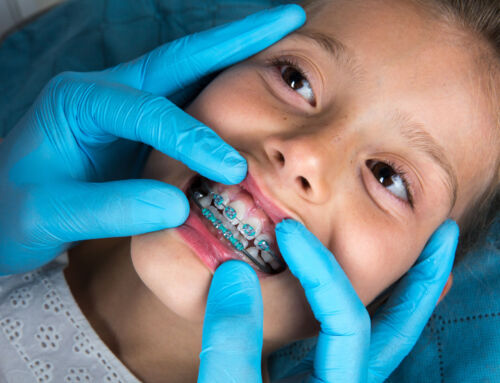The best age to get braces can vary depending on individual dental health and orthodontic needs. However, orthodontists often recommend an initial orthodontic evaluation by the age of 7. This doesn’t mean that a child will get braces right away, but early evaluation allows the orthodontist to detect and evaluate any issues and plan for future treatment if necessary.
Ideal Age for Braces:
- Early Childhood (Ages 7-10): This is often referred to as Phase One of orthodontic treatment. It’s not about putting on full braces but rather addressing significant issues that could affect the development of the mouth, jaw, and teeth. Early treatment may prevent more serious problems from developing and may make treatment at a later age shorter and less complicated.
- Adolescence (Ages 11-14): This is the most common age for braces. Most permanent teeth have erupted by this time, making it an ideal period to correct alignment and bite issues. At this age, children’s bones and tissues are still growing, which can make them more responsive to orthodontic treatment.
- Adults: There is no age limit for braces. Adult braces are becoming increasingly popular, and advances in orthodontic technology have made them a feasible and effective option for individuals of all ages. While treatment may sometimes take a bit longer in adults, due to the maturity of jawbones and tissues, the results can still be just as effective as treatment during younger years.

Factors Your Fort Worth Orthodontist Looks At For When To Get Braces
As an experienced orthodontist, Dr. Barron considers several factors beyond just age when determining the optimal time to begin braces treatment for a patient. These factors are crucial in developing a treatment plan that is both effective and appropriate for the patient’s specific needs. Here are some key considerations:
- Dental and Skeletal Development: The stage of a patient’s dental and skeletal development is a primary consideration. Orthodontists assess the growth of the jaw and the eruption pattern of permanent teeth. For example, certain treatments may be more effective when performed during the active growth phase of a child.
- Type of Orthodontic Issue: The nature and severity of the orthodontic problem play a significant role. Issues like crowding, overbites, underbites, or crossbites may require different timing for intervention. Some conditions are better addressed early when they can be guided more easily during growth, while others might need to wait until more permanent teeth have erupted.
- Oral Health Status: Good oral health is essential before starting orthodontic treatment. Issues like cavities or gum disease need to be resolved as they can affect the outcome of the braces treatment.
- Patient’s Motivation and Compliance: The success of orthodontic treatment often hinges on the patient’s commitment to following the orthodontist’s instructions, including maintaining oral hygiene and attending regular appointments. The orthodontist will evaluate if the patient, especially if they are a child, is likely to cooperate with treatment requirements.
- Overall Health Considerations: General health can impact orthodontic treatment. Conditions that affect bone health or healing may influence the timing and type of orthodontic treatment recommended.
- Social and Emotional Readiness: Particularly for younger patients, it’s important they feel comfortable and ready for the changes and responsibilities that come with wearing braces. The orthodontist will assess the patient’s maturity level and readiness to embark on the treatment journey.
- Family and Lifestyle Considerations: Factors such as family support, the patient’s extracurricular activities, and lifestyle can also influence the decision. For instance, a child heavily involved in contact sports might need special considerations for timing and type of braces.
- Financial and Logistical Factors: Practical aspects, including the cost of treatment, insurance coverage, and the patient’s ability to attend regular orthodontic appointments, are also considered in the treatment planning process.
Our doctors Andy and Shawne Barron at Ahava Orthodontics, will carefully evaluate these factors to determine the most appropriate time to start braces treatment, ensuring a successful outcome that aligns with the patient’s overall well-being and orthodontic needs.




